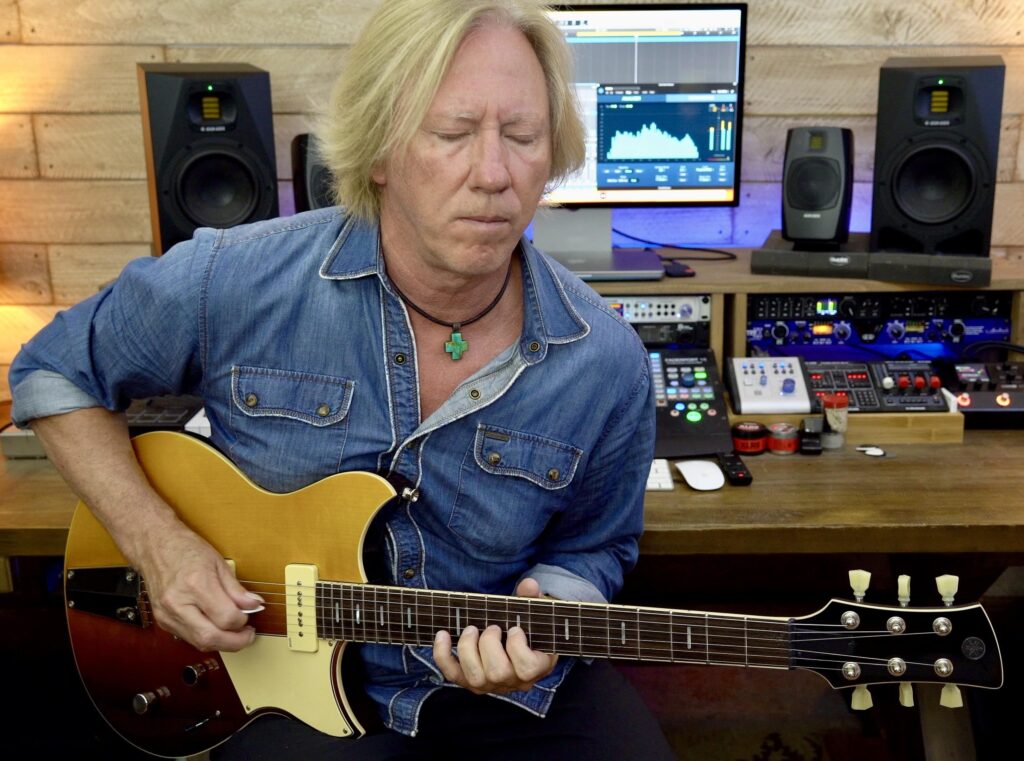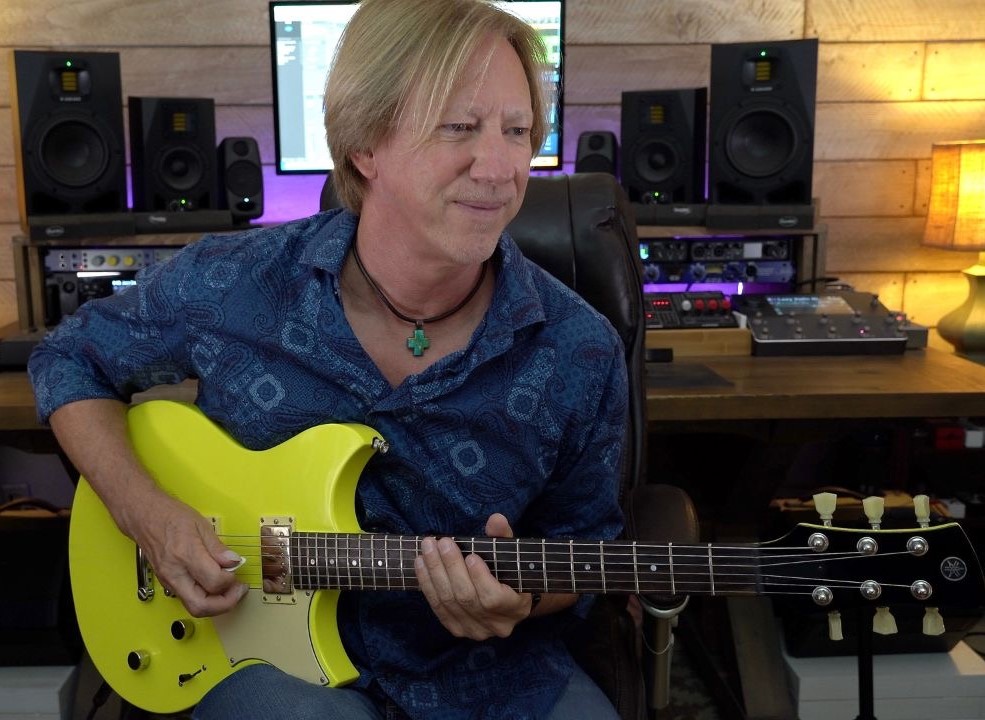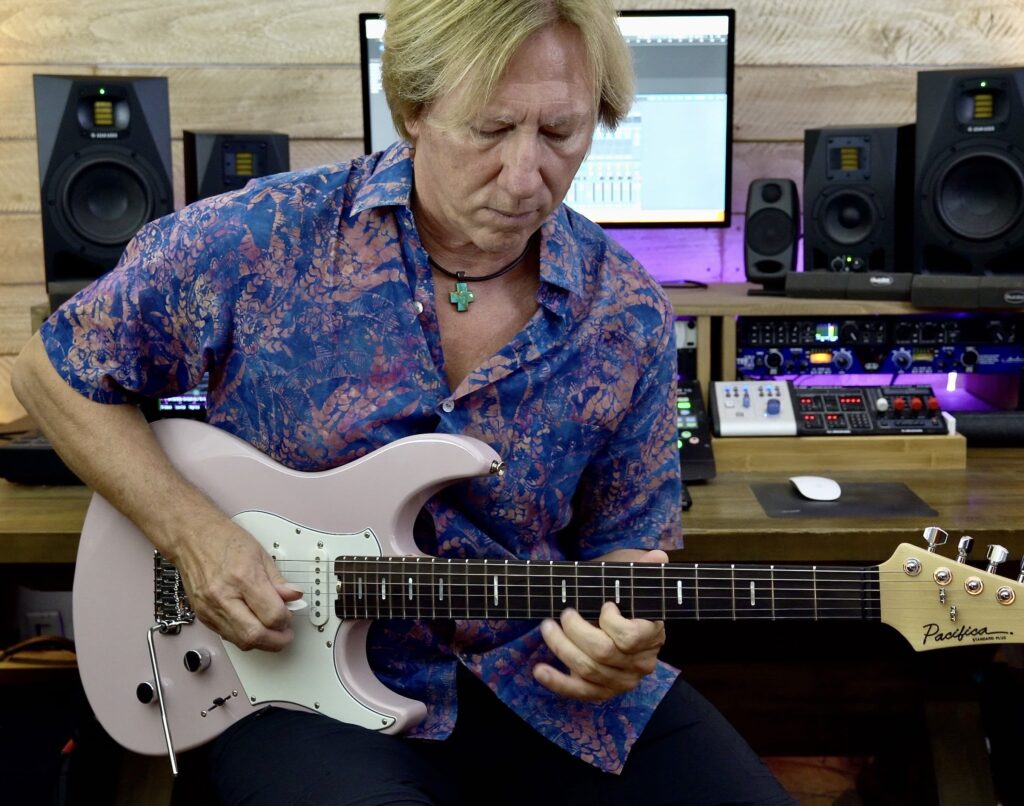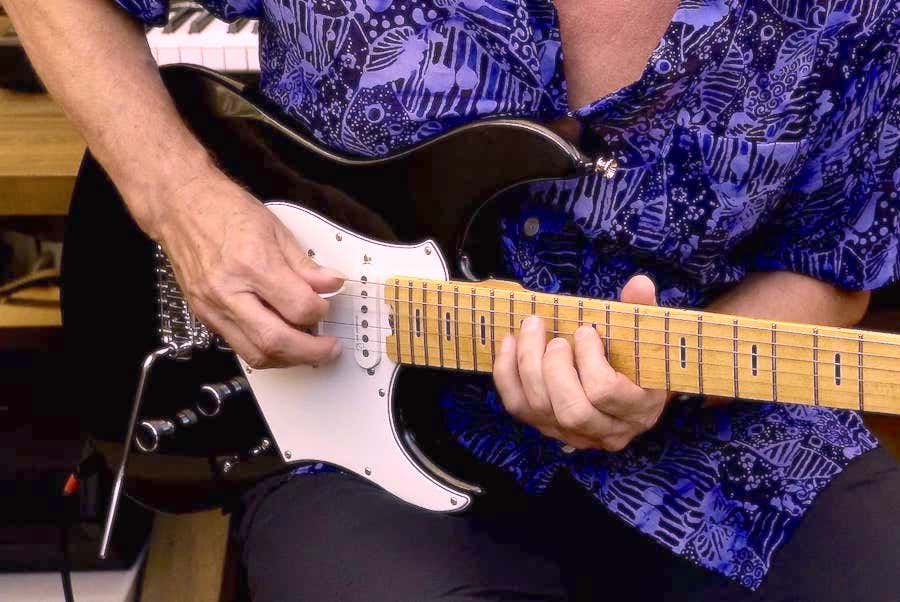Secrets to a Successful Jam Session
Explore creative ideas with no pressure to be perfect.
There’s a sense of freedom and autonomy that I really enjoy as a solo performer, but I also really enjoy the camaraderie and energy of working with a band.
I often get to jam with friends in social situations, so I do get to enjoy ensemble interactions outside of my professional engagements. Let’s face it: Jamming is fun. There’s no pressure to be perfect, and it’s a great environment in which to explore creative ideas.
Yet despite the relaxed atmosphere of a jam, I do feel there is an etiquette to those musical interactions — a protocol that, when observed, can lead to an even better experience for all involved. Here’s a guide to holding a successful jam session, along with some backing tracks you can practice to when friends aren’t available.
FOLLOW THE LEADER
Like most social or business gatherings, jam sessions usually have an obvious leader. If you feel that the group needs some guidance, and you have the experience to lead a musical adventure, by all means step up and make some suggestions on how to proceed. (Or you can just start playing — often everyone else will follow along.)
One of the main jobs of the leader is to call out the solos, either verbally or with a nod of the head. This will help everything stay on track, and allow everyone to take a shot at playing lead. If the designated soloist is unsure of the scale they should use, the leader should mouth that to them or take a short solo themselves to demonstrate how it might work. The goal is to make sure no one feels left out: after all, it’s a jam, not a gig.
Once the tempo, feel and groove of the jam is established, I like to add an alternate rhythm guitar part to enhance the music. However, I always stay locked into the chord structure without complicating the changes.
COMMON COURTESIES
It’s important to stick with the plan, at least in the initial stages of a jam. When someone decides to suddenly change the chord progression or rhythm part, things can start to quickly fall apart. That’s why it’s important for everyone to learn the chord structure and stick to it when someone else is soloing. It’s a big part of jamming etiquette.
Make sure your volume and tones are appropriate for the situation too. All this takes is a little awareness and time to listen to the general dynamic within the group. Being too loud or using inappropriate tones can turn people off.
I’ve asked players to turn down many times. I’m sure it makes some people wonder, “Who the heck does he think he is?” … but I’m doing it for the greater good of all. Sometimes you have to be brave and tell it like it is!
START WITH A SIMPLE CHORD PROGRESSION
I suggest starting with a simple chord progression, one that all the participants can play easily. That way, everyone can relax and not feel any anxiety or pressure to perform. Making sure everyone can be involved is essential too. If someone isn’t clear on a guitar part or the chords, take a moment to show them what the underlying structure is.
Simple chord progressions can evolve into epic compositions in the hands of creative players, and beginners will also learn a great deal by hearing the possibilities created by the more experienced players in the room.
Here’s a basic chord progression that’s ideal for kicking off a jam session:
II: Emi I Emi I C I D :II
The tablature for these chords in the open position (i.e., with open strings ringing out, as indicated by the Os on the left) is as follows:
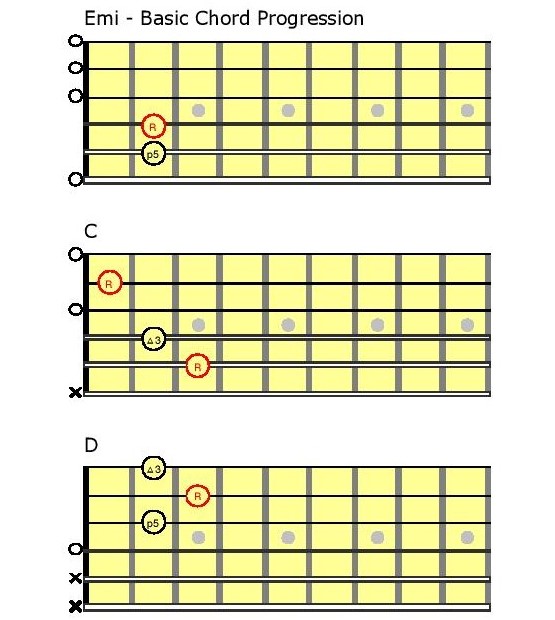
If you analyze this in the key of G, you can see that it’s a Vi mi / IV ma / V ma (minor sixth, major fourth, major fifth) chord progression. You can, of course, further enhance this progression to create harmonic variation if you like, but this is an excellent place to start.
In the video below, my enhancements to the basic chord progression are as follows:
II: Emi9 I Emi9 I C5/2(#11) I Dadd4 :II
None of these extensions change the progression; they simply add flavors to the overall vibe of the jam. You can then add a nice arpeggiated part like this to enhance the overall pop/rock sensibilities of the jam:
II: Gma7 I Gma7 I Cma7 I D5/2 :II
Hang on a minute (I hear you say)! Where did the Gma7 chord come from? Well, Gma7 contains the same tones as Emi9 and can therefore be used as a chord substitution. In this way, we can take a simple structure and bring it to life with harmonic enhancements, along with rhythmic variation.
An ideal scale to use for improvisations over this progression would be the E minor pentatonic scale … which is exactly what I chose to use in the video.
TIME TO GET JAMMING
Now, it’s time to get jamming! First, here’s the basic backing track from the video below with just bass, drums and keyboards:
I then added an underlying arpeggiated acoustic guitar (“Guitar 1”) part, which you can hear in the audio clip below:
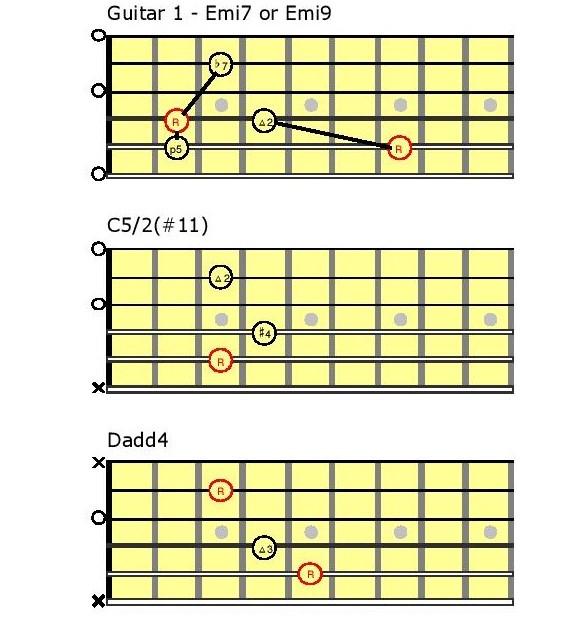
Finally, I added a second arpeggiated part, this time played on electric guitar (“Guitar 2”):
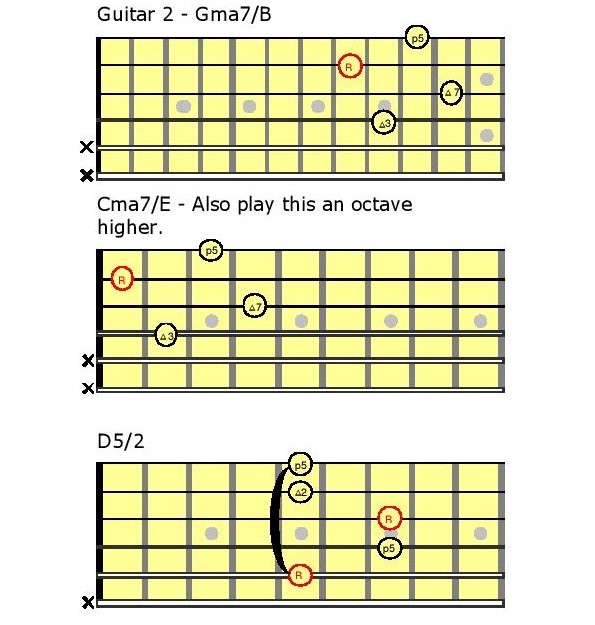
Try jamming over all three of these audio clips and see what kinds of leads and improvisations you can come up with.
THE VIDEO
This video demonstrates all the chord changes and techniques described here; watching it will help you to articulate the Guitar 1 and Guitar 2 parts described above. It also showcases a nice solo and phrasing applications of the E minor pentatonic scale.
THE AMP
All the tones for both the audio clips and the video come from one amplifier: the compact yet powerful Yamaha THR30IIA desktop amp. Even though it’s designed for use with acoustic guitars, the electric guitar solo was played through it too, along with my favorite overdrive/ compressor foot pedals.

I love all the THR-II wireless desktop guitar amplifiers for so many reasons. They combine state-of-the-art modeling technology and outstanding effects with a tuner, a tap tempo feature, an auxiliary input (so you can listen to music from smartphones, tablets, laptops and MP3 players) and stereo speaker imaging — and they can also be used as a stand-alone audio interface for recording directly to your computer. These portable tone machines provide enough horsepower to take to a jam session too — even if you’re jamming outdoors. That’s because they’re battery-powered and will last well into the night.
The THR30IIA also comes equipped with a microphone input and dedicated volume/reverb controls so you can sing through it without the use of a PA system (which would be overkill for most jam sessions). In addition, there are multiple mic models and three-way stereo imaging to further enhance the audio experience. It’s an amazing little package for any living room jam … or even for a cafe gig.
THE GUITARS
The Yamaha AC5R ARE A Series acoustic guitar used in the video also comes with its own onboard microphone modeling (your choice of large diaphragm tube or ribbon mic), so getting great tones with the THR30IIA was a breeze. It comes standard with a solid Sitka spruce top and rosewood back and sides, making the acoustic tones just as impressive as the amplified ones.

The Pacifica 612 is quite possibly the most versatile electric guitar Yamaha makes, suitable for everything from clean pop to screaming rock ’n’ roll. Its five-way pickup selector switch allows you to dial in any number of tones, making it a great guitar to take to any jam.

THE WRAP-UP
One of the best ways to improve as a musician is to work with other players, especially if they are more advanced than you are. Jamming allows you to interact with your peers and players of all levels.
Take a great guitar, amp, effects and attitude with you to the jam. Do all you can to guide and support your contemporaries, and then tap into your inner rockstar when it’s your time to shine. The key to a successful jam session is listening first, responding and playing second. Consider yourself a musical conversationalist and you’ll do just fine.










